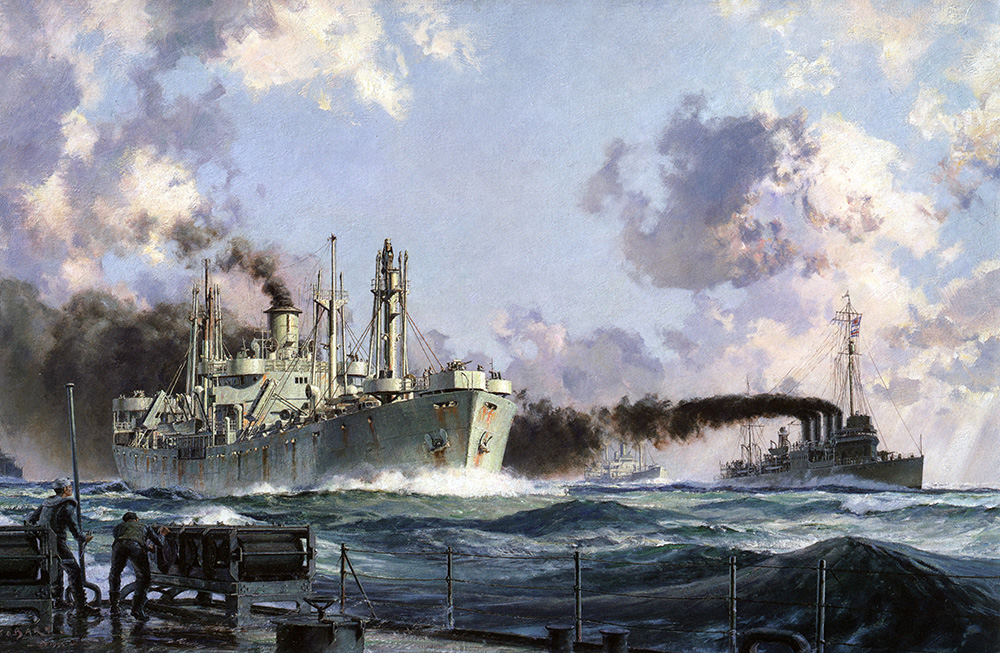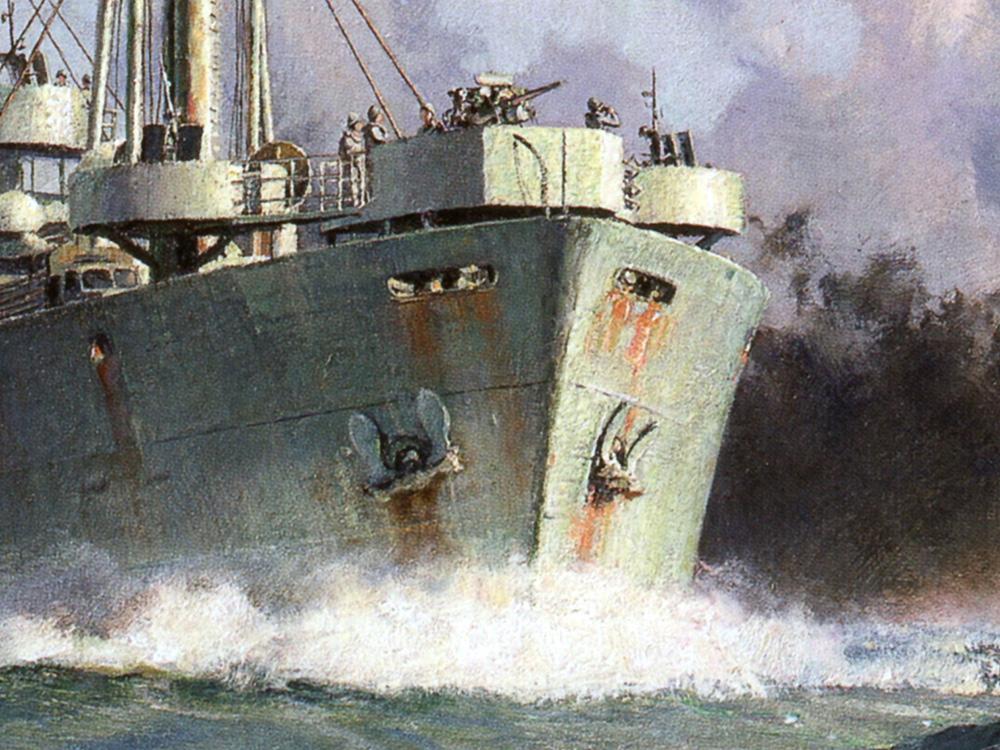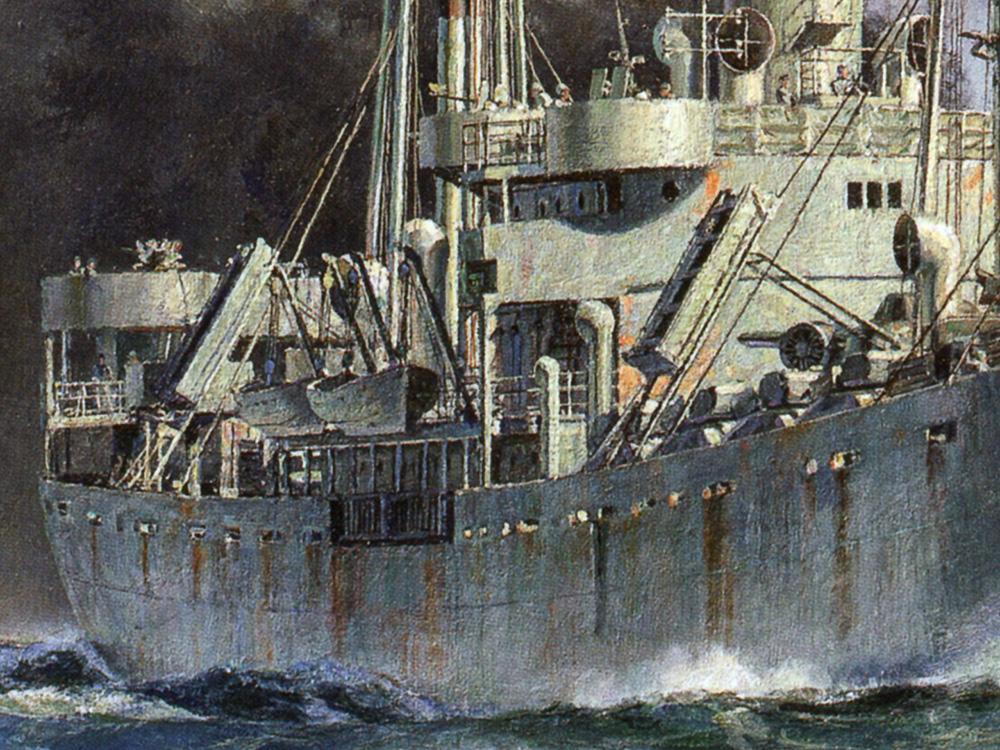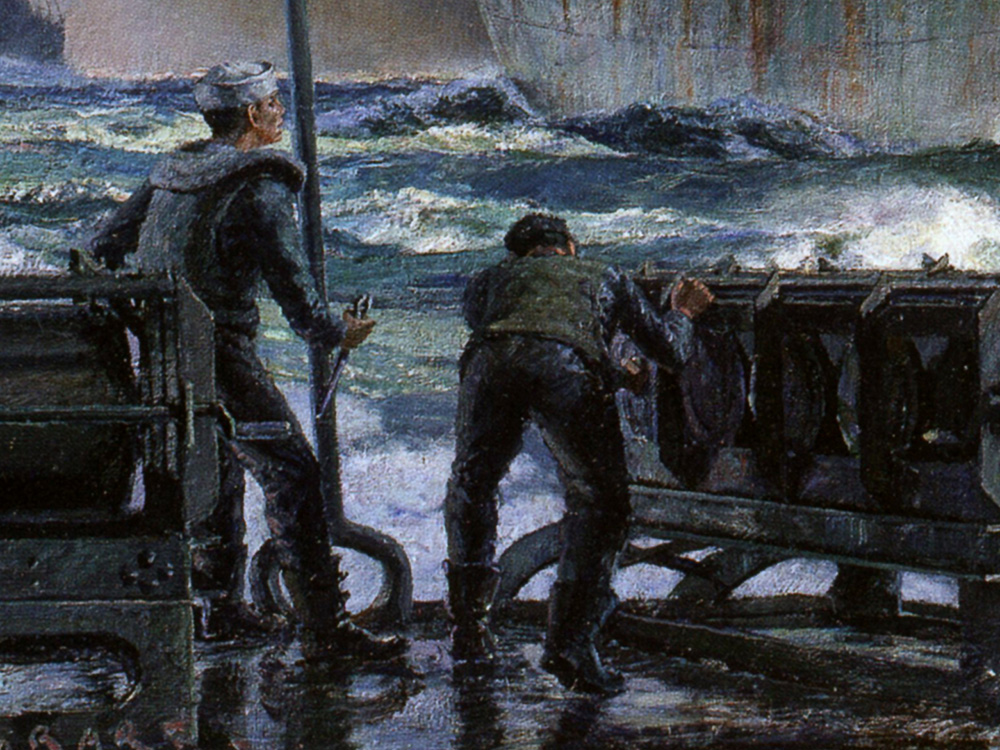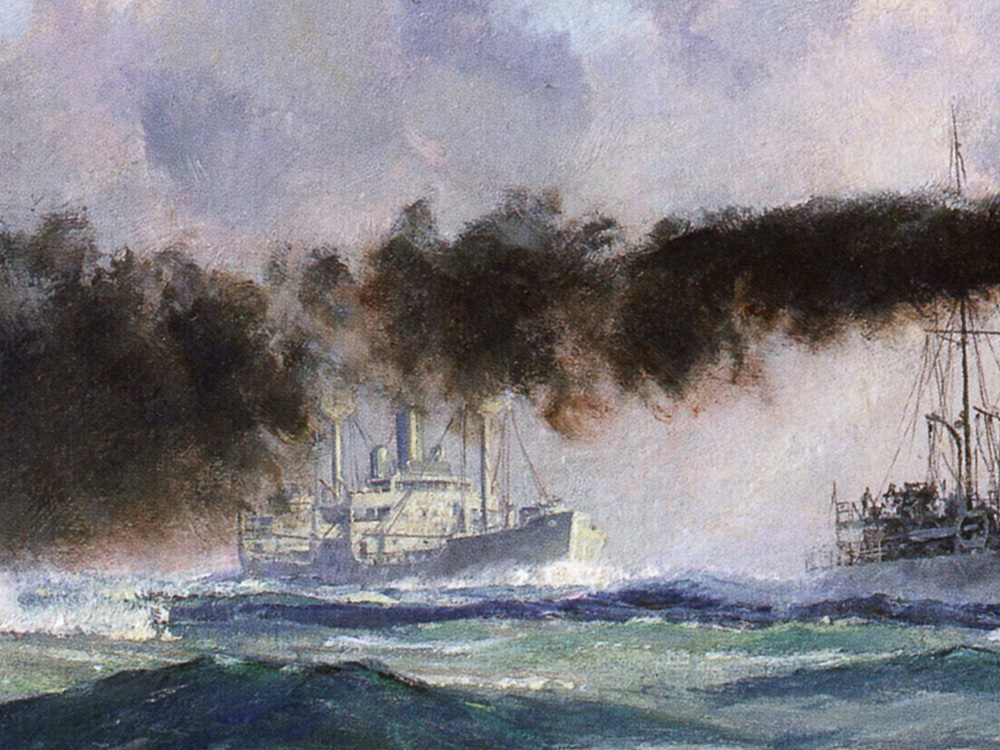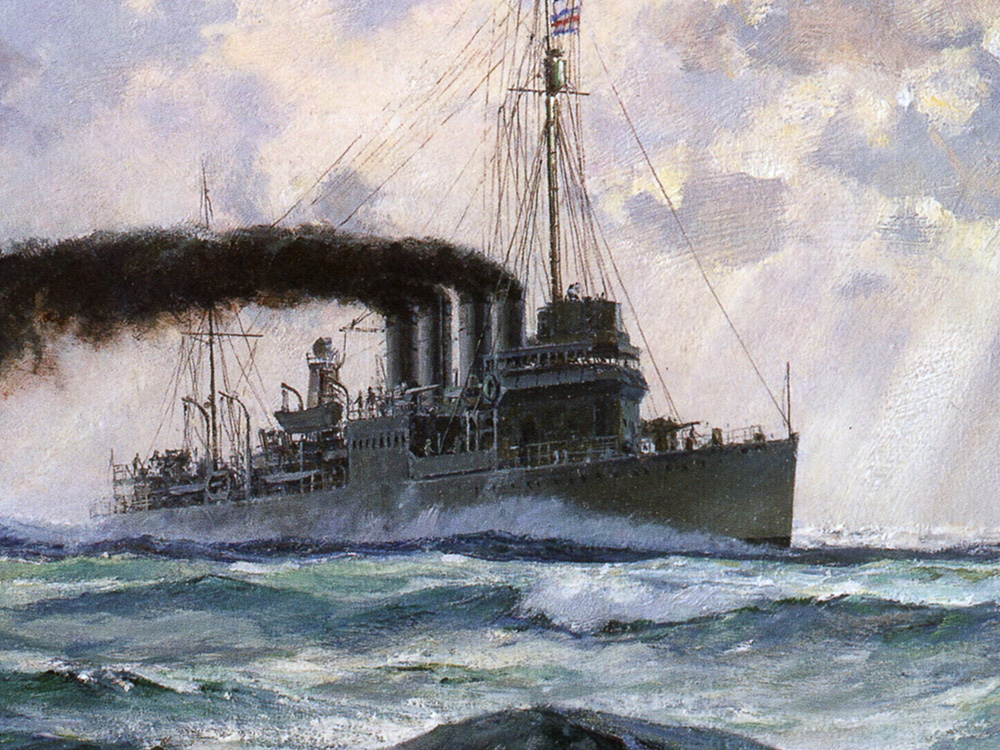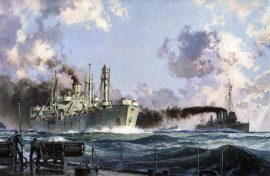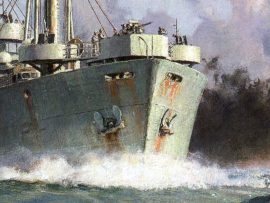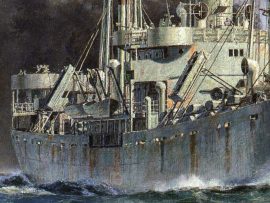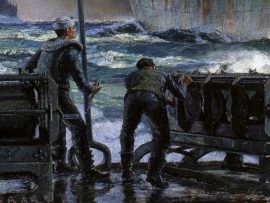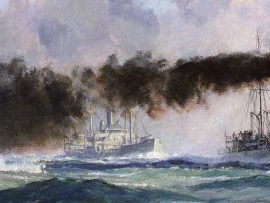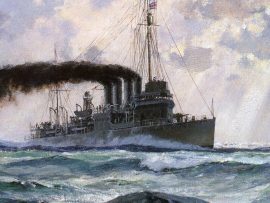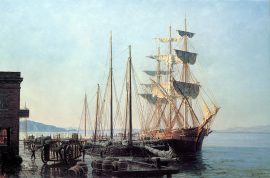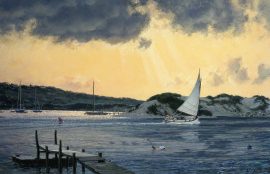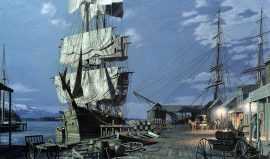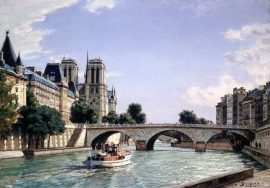The Liberty Ship: The “John W. Brown” in Convoy Off the East Coast, April 1944
$400.00 Original price was: $400.00.$360.00Current price is: $360.00.
The Liberty Ship came into being at the time when Britain’s very survival was in the balance. Germany had over-run Europe and was blockading the British Isles with a fleet of U-boats. These U-boats were sharing ships carrying supplies faster than they could be replaced. The solution was to request the U.S. to build a standard cargo ship in quantity under an agreed lease-lend plan. What followed was the greatest feat of mass production ever known. The credit for this was largely due to a one time New York photography shop owner by the name of Henry J. Kaiser. At first associated with Todd Shipyards, Kaiser was to develop yards at an astonishing rate. Vast industrial complexes were constructed in sites on both U.S. and Canadian coasts. Activity also extended into the Golf of Mexico and up the rivers of the Mississippi basin. Urgency was paramount, and soon the Liberty Ship, designed along the lines of the British “tramp” steamer concept but modified to suit welded, modular construction, was being produced in such quantity that between 1942 and 1946 a total of 2710 were delivered. No other ship was built in such enormous quantities or achieved such a noble objective, that of being the catalyst which turned the tides of the invasion. The saga of the Liberty Ship is therefore one of the proudest chapters in the annals of American maritime heritage.
The JOHN BROWN is one of two Liberty Ships that were preserved, and is berthed in Baltimore harbor. In company with the other survivor, the JEREMIAH O’BRIEN berthed in San Francisco, and the LANE VICTORY a preserved ship of the Victory” class (successor to the Liberty). Convoys that the JOHN BROWN joined almost invariably formed up in New York harbor, thence proceeding down the East Coast to Norfolk, Virginia where additional ships would be added prior to commencing the transatlantic crossing to Europe.
This painting of the JOHN BROWN shows her in the epitome of her role as an armored freighter in just such a convoy. She is shown proceeding down the East Coast with World War I class destroyer U.S.S. BARRY, also known as a “Four Piper”. The BARRY lays down a smoke screen in an attempt to hide the heavily laden ships from the killer submarines, as she flies the signal “W” over “C” (U-boat contacted). In the shadow of the lower foreground, seamen ready depth charge racks for action.
| Weight | 6.00 lbs |
|---|---|
| Catalog: | Stobart-172 |
| Artist: | John Stobart |
| Dimensions: | 19" x 31" |
| Edition: | 750 |

